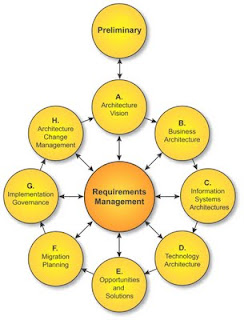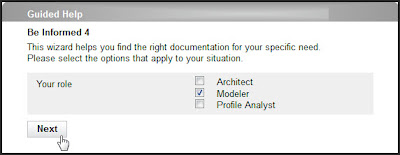Documentation as a Service
A knowledge-based, semantically-modeled process can provide exactly the right result for end users and a powerfully effective tool for working teams in an organization. An additional benefit comes with the semantic solution for documentation: the ability to generate multiple output forms in multiple languages and addressed to different audiences from one set of models and content. User manuals, reference documentation, contextual help, in-context explanations, on-line user-assistance and complete inter- and intranet sites can be generated from one single repository, consisting of the relevant models and references to the content.
Generating multiple documentation forms is one step in the process of providing documentation as a service. We can take it even one step further by integrating all these output forms in one smart user assistant. The smart user assistant adapts to events, answers questions, gives advice and assists in completing tasks. The key is computing with knowledge in the user interface, which is exactly what we can do with our models.
When the model = the design = the application = the documentation, our influence as technical communicators will no longer be limited to the documentation alone, but will have impact on all aspects of the product.
Technical communication is no longer the publishing of fixed documentation products to users, but the offering of flexible knowledge products as a service. Updating the semantic model automatically updates the user interface, the technical documentation, the contextual help, the user guides and all other output forms.
Generating multiple documentation forms is one step in the process of providing documentation as a service. We can take it even one step further by integrating all these output forms in one smart user assistant. The smart user assistant adapts to events, answers questions, gives advice and assists in completing tasks. The key is computing with knowledge in the user interface, which is exactly what we can do with our models.
When the model = the design = the application = the documentation, our influence as technical communicators will no longer be limited to the documentation alone, but will have impact on all aspects of the product.
Example
The call center of a manufacturer of consumer electronics, handles several hundreds of service requests for their products a day. As this is an international organization, support is given in a variety of languages, to people with different backgrounds and skill levels and different needs of support.
With the introduction of a semantic solution, documentation and support are delivered as a service. Customers can either access a virtual assistant that helps them with their problem, or call the call center. The call center uses the same smart documentation solution, but then with a view that is tailored to their needs, context and level of experience. Problems are solved in a process-driven way, with all choices and decisions automated. Every call is stored and all advices and actions are fully traceable and linked to the customer. Manuals and separate instructions can be printed on demand or send in PDF format to customers worldwide.
Technical communication is no longer the publishing of fixed documentation products to users, but the offering of flexible knowledge products as a service. Updating the semantic model automatically updates the user interface, the technical documentation, the contextual help, the user guides and all other output forms.
Join me at the STC Summit 2013 for an interactive demonstration
As announced earlier, I will demonstrate how we can use semantic
technology to create process-driven documentation at the
STC Summit 2013 in Atlanta. I will do this by
live modeling with a semantic tool set. As the models in the semantic
environment are instantly executable, we can watch the documentation develop, change the models and review the results in a
web browser.
When: May 6th, 2:00 pm (EDT)
Where: Hanover FG, Hyatt Regency Atlanta - Track my session
Level: Advanced
When: May 6th, 2:00 pm (EDT)
Where: Hanover FG, Hyatt Regency Atlanta - Track my session
Level: Advanced
Download the white paper
The white paper “Improve Product and Brand engagement through smart documentation” is available for download on: http://info.beinformed.com/stc13
. This white paper will give you some background information for the
session. Downloading requires an email address, so I can keep you
up-to-date on future developments (there is always an opt-out).


Comments